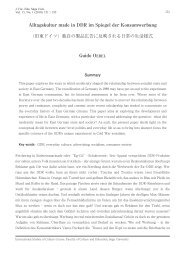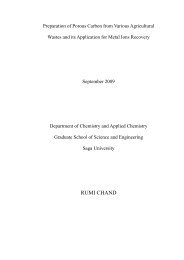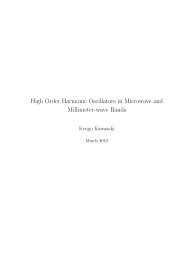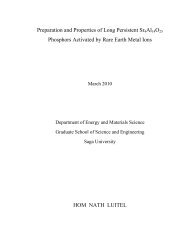ε (eV)
ε (eV)
ε (eV)
Create successful ePaper yourself
Turn your PDF publications into a flip-book with our unique Google optimized e-Paper software.
like ozone or hydroxyl radical can be produced and play in the same time a major<br />
role in neutralization of bacteria. An increase efficacy also showed the addition<br />
of small halogens volumes such as chlorine, bromine and iodine within the steril-<br />
ization chambers. It was concluded that oxygen mixtures containing gases (e.g.,<br />
CO2, O2, N2, H2O vapors, etc.) are much more effective than others (e.g., inert<br />
gases) [17].<br />
A new step towards a better understanding of sterilization process came when<br />
the ultraviolet emission, inherent in plasmas, was taken into account as an in-<br />
activation agent, especially for its role played in the direct attack against DNA<br />
molecules [15-18, 70]. Until then, in low pressure plasmas, the main mechanism it<br />
was believed to be the incineration and oxidation of the biological structures [55,<br />
58].<br />
The first model of the sterilization process came 1993, based on a thermody-<br />
namic approach revealing some insights on the influence of the substrate tempera-<br />
ture on the oxidation rate of microorganisms [17]. The kinetics of adsorption and<br />
desorption processes which lead to a better destruction rate were analyzed. It was<br />
concluded that the free radicals present in the discharge are reacting with the cell<br />
walls, enzymes and nucleic acids destroying the vital parts of the microorganisms.<br />
However, this simplification of the inactivation mechanisms did not take into ac-<br />
count the UV radiation. A more extensive physical description of the sterilization<br />
process is advanced few years latter, which takes into account the dynamics of<br />
13







